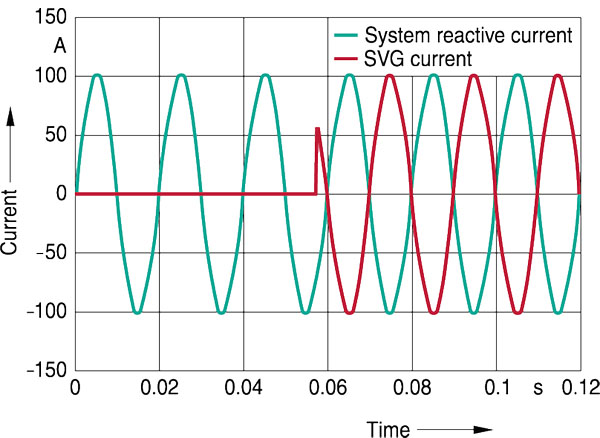Response time of reactive power compensation product
Aug 19,2024
Response time of reactive power compensation product
The response time of a reactive power compensation product refers to the time it takes for the device to detect a change in the reactive power demand and adjust its output accordingly to maintain the desired power factor or voltage level. This is a crucial performance metric for systems that require rapid compensation, such as those with dynamic loads.
Key Factors Influencing Response Time:
Type of Reactive Power Compensation Device:
-
Static Var Generators (SVG): SVGs are known for their fast response times, typically in the range of a few milliseconds (2-10 ms). They use power electronics to dynamically inject or absorb reactive power, making them suitable for applications with rapid load changes.
-
Static Synchronous Compensators (STATCOM): Similar to SVGs, STATCOMs can respond very quickly, often within milliseconds, due to their solid-state components that can rapidly adjust the reactive power output.
-
Capacitor Banks: Traditional capacitor banks have slower response times, usually in the range of several seconds, because they rely on mechanical switching to connect or disconnect capacitors. Automatic capacitor banks with solid-state switches can improve response times but still lag behind SVGs and STATCOMs.
-
Hybrid Systems: These systems combine the strengths of both fast-responding devices like SVGs or STATCOMs with slower but cost-effective capacitor banks, offering a balance between response time and cost.
Control System:
-
Advanced Control Algorithms: Devices equipped with sophisticated control systems and algorithms can detect changes in load conditions and respond more quickly.
-
Sampling Rate: The speed at which the control system samples the load conditions affects the response time. Higher sampling rates enable quicker detection of changes and faster compensation.
Application Requirements:
-
Industrial Loads: Industries with rapidly changing loads, such as welding machines or large motor startups, require fast-reacting compensation devices to avoid voltage instability or power factor penalties.
-
Grid Stability: In applications where grid stability is critical, such as renewable energy integration or large data centers, quick response times are essential to maintain voltage levels and prevent disturbances.
Typical Response Times:
-
SVG/STATCOM: 2-10 milliseconds
-
Automatic Capacitor Banks with Solid-State Switching: 100 milliseconds to a few seconds
-
Traditional Capacitor Banks: Several seconds
Importance of Fast Response Time:
-
Voltage Stability: Quick compensation prevents voltage sags or swells, ensuring stable operation of sensitive equipment.
-
Power Factor Correction: Fast response helps maintain a consistent power factor, avoiding penalties from utilities.
-
Harmonic Mitigation: Devices like SVGs that can also filter harmonics provide additional benefits in maintaining power quality.

The response time of reactive power compensation products is a critical factor in their effectiveness, particularly in applications with fast-changing loads. SVGs and STATCOMs offer the quickest response, making them ideal for environments where immediate reactive power adjustment is needed. When selecting a reactive power compensation solution, it's important to consider the specific needs of the application to ensure adequate response times.
